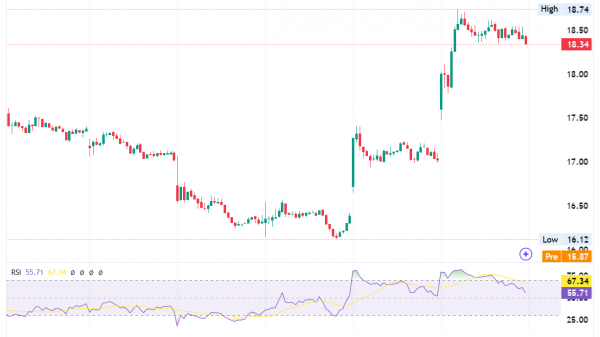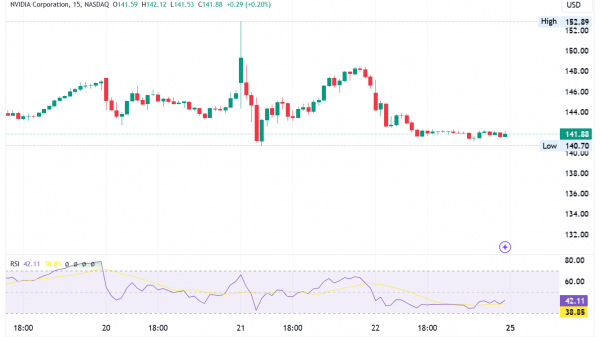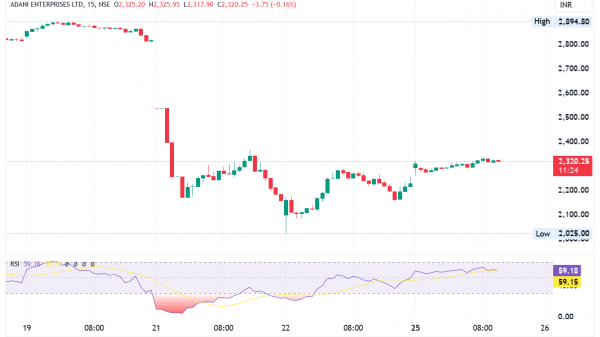How to Calculate Stop Loss: Essential Tips for Every Trader
Key Takeaways:
Understanding Stop Loss: Crucial for traders to limit potential losses and protect profits by setting their orders based on entry price and market conditions.
Essential Indicators: Various technical indicators aid in setting its levels, ensuring effective risk management and optimal position sizing.
Varieties: Static, dynamic, and volatility-triggered tactics offer versatile strategies for managing risk and maximizing gains in trading.
Calculation Methods: Simple formulas based on the entry price and its level facilitate accurate calculations, empowering traders to make informed decisions.
Position Sizing: Determining position size based on predetermined risk percentages ensures stable trading outcomes across different markets, enabling traders to focus on essential factors for long-term profitability.
Have you recently pondered the intricacies of calculating stop loss like a seasoned professional trader?
Delving into this fundamental aspect is essential and pivotal for long-term profitability in trading endeavours. Before diving into the mechanics of stop loss calculation, let’s embark on a journey from the beginning.
Let’s unravel the essence of its signals, explore its primary indicators, and delve into its various types. Shall we commence this enlightening exploration together?
What are stop-loss signals?
A stop-loss is an order with a broker to end a trade at a set price to limit potential losses.
Typically, traders position a stop-loss below the trade’s entry price when employing trading signals alongside it.
For instance, if a trading signal advises purchasing a Forex pair at a specified price, the trader would establish a stop-loss order below the entry price.
If the currency pair’s price reaches a specific level, the stop order will automatically close the trade.
Traders use this approach to prevent further losses. The SuperTrend Indicator assists in establishing its levels by utilizing ATR and moving averages, which proves beneficial for managing position size and safeguarding profits.
Percentage of the trade’s entry price
Traders can set stop-loss orders based on a percentage of the trade’s entry price. This is known as a percentage-based stop-loss and is used for risk management.
This enables the stop-loss to adjust to market fluctuations, which is particularly beneficial in volatile markets.
Stop-loss orders help manage risk for traders using signals, but they do not guarantee protection from losses.
Market conditions can make the price exceed the stop-loss level. This will result in the trade closing at the next available price.
What are the main Stop Loss Indicators?
When buying or selling assets, traders rely on various technical indicators to set stop-loss levels. Among these are:
Parabolic SAR gives signals to protect against trend reversals, which is especially useful for securing profits in long positions.
Chandelier Exit: Calculates stop loss levels based on market volatility, aiding in managing position size and protecting gains.
SuperTrend Indicator helps set its levels using ATR and moving averages, which is useful for managing position size and securing profits.
ATR Trailing Stop adjusts its levels based on market conditions, which is important for managing risk and maximizing gains.
Chande Kroll Stop adjusts stop loss levels using ATR and Chandelier Exit concepts. This is important for managing market volatility and controlling position size effectively.
TRIX Indicator: Identifies potential trend reversals and market volatility, facilitating the generation of effective stop-loss levels to protect profits and manage position size.
Volatility Stop Indicator: Calculates stop loss levels based on market volatility, ensuring effective risk management and optimal position sizing.
Exploring Stop Loss Varieties
Regarding stop-loss tactics, traders employ various strategies to manage risk and lock in profits. Here are the main categories:
Static Stop Loss
This method sets a predetermined price level, representing an acceptable loss threshold. Once the market reaches this level, the trade is automatically terminated.
It is a fundamental risk management tool for traders implementing different trading strategies.
Dynamic Stop Loss
Unlike static methods, dynamic loss adjusts its threshold as the market moves in the trader’s favour.
This strategy allows FX traders to lock in profits while leaving room for further gains. It is a versatile tool utilized by traders who are eager to optimize their trading strategies and maximize profits.
Volatility-triggered One
This approach adapts the stop-loss threshold based on market volatility. This technique helps prevent closing trades too soon.
It adjusts stop-loss levels according to market conditions. Market conditions include fluctuations in the market.
It is an 100% effective risk management tool for traders navigating volatile markets and employing diverse trading strategies.
How to calculate stop loss and take profit?
If you’ve been wondering how to calculate take profit and stop loss, to commence, determine your stop loss in pips, dollars, or your chart’s quoted currency.
For precise stop loss assessment, employ the following formula:
|Entry – Stop Loss| = Risk
Irrespective of risk direction, always consider the entry price’s absolute value (ABS) minus the stop loss price.
Forex Trading: Assessing Risk
In Forex, measure risk in pips or pipettes, contingent on price quotes.
For example, in the EURCHF chart, with the stop loss at 0.97068 and entry at 0.98609, the risk calculates to 0.01541, equivalent to 154.1 pips.
Stock Trading: Evaluating Risk
When trading US stocks, gauge risk in dollars. For instance, if the stop loss is 67.50 and the entry is 59.60, the risk amounts to 7.90.
Crypto Trading: Analyzing Risk
Crypto trading involves diverse quoting formats. For instance, in the Monero/US Dollar pair, where the stop loss is 134.23 and entry at 115.332, the risk amounts to 18.898.
Understanding the calculation of your stop loss facilitates the effective determination of your percentage risk per trade.
How to calculate take profit?
Calculating Take Profit (TP) involves a straightforward formula:
TP = EP + (EP – SL)
Begin by identifying the entry price (EP).
Then, establish the stop loss level (SL).
Utilize the formula TP = EP + (EP – SL) to compute the take profit level (TP).
How to calculate the Stop Loss Percentage?
Once you’ve determined your stop loss in quote value, the subsequent step is to determine your position size, guided by your predetermined risk percentage.
Sustaining a consistent risk per trade is imperative for maintaining stable trading outcomes. Fluctuations in risk could result in disproportionate losses or insufficient gains, impacting the overall profitability of your trading account.
Example
For example, let’s envision a scenario where you risk 3% on your initial trade, leading to a loss. Following this, you risk 1% on the subsequent trade, generating a 1% profit. Despite experiencing one win and one loss, your trading account still registers a 2% deficit.
However, you would break even by consistently risking 1% per trade and targeting a 1% profit.
Maintaining consistent risk allocation streamlines trading operations by minimizing variability, enabling you to concentrate on crucial factors such as win rate and return per trade.
Let’s assume a $10,000 trading account with a 1% risk per trade, translating to a $100 risk for each trade.
We will employ the same dollar and pip values as before to determine the appropriate number of shares, units, or cryptocurrency to buy or sell. This will facilitate efficient decision-making on the trading platform in response to price movements.
Forex Trading Example
In Forex trading, determining trade size involves considering lot sizes and pip risks across currency pairs.
For simplicity, use a position size calculator or learn about Forex lot sizes.
Assuming micro lots with a $0.10 pip risk:
154.1 x 0.10 = 15.4
This equals $15.40 of risk per micro lot.
Divide the total risk by the risk per micro lot:
$100 / $15.40 = 6.49
Thus, trading 6 micro lots ensures a 1% risk in your account.
Stock Trading Example
In stock trading, determine the risk per share quoted in dollars.
For instance, with a total risk of $100 and a risk per share of $7.90:
$100 / $7.90 = 12.6
Hence, selling short 12 shares of stock is advisable.
Crypto Trading Example
As with stocks, calculate risk per coin/token quoted in US dollars in cryptocurrency trading.
For example, with a total risk of $100 and a risk per coin of $18.898:
$100 / $18.898 = 5.29
Cryptocurrencies can be divided precisely. In this case, you could purchase 5.29 Monero coins.
Conclusion
In summary, becoming proficient in calculating stop loss isn’t merely a skill—it’s a must for traders seeking reliable profitability.
By grasping its principles, using crucial indicators, exploring various tactics, and employing calculation methods adeptly, traders can confidently and accurately navigate the markets.
With disciplined position sizing and effective risk management, traders can protect their capital and enhance their trading strategies for sustained success in the long run.
The post How to Calculate Stop Loss: Essential Tips for Every Trader appeared first on FinanceBrokerage.


































